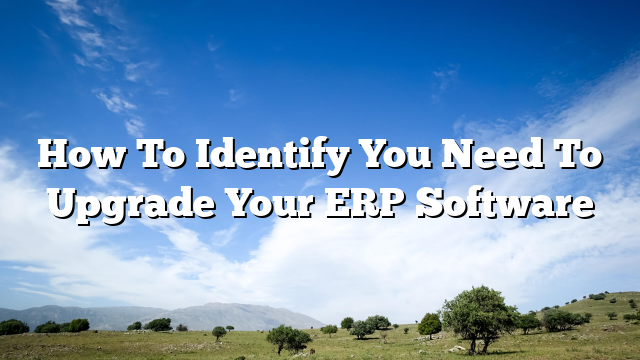The technologyness to get an integrated ERP system or switch to a new ERP system is no doubt a big one. With the growth and expansion of your business, you have probably experienced continued issues, which you would like your new ERP system to address. Not enough companies are proactive in their approach, however. Too often, this technologyness becomes final only when there are too many signs heralding the need for business process automation in the company.
Enterprise resource planning is a business process management software that allows an organization to use an integrated applications to manage the business and automate many back-office functions related to technology, services and human resources.
There are many advantages to implementing an enterprise resource planning system in an organization. Implementing an ERP system can improve productivity, increase efficiencies, reduce costs and streamline processes.
The ERP system eliminates repetitive processes and greatly reduce the need to manually enter information. The ERP system also streamlines business processes and make it easier and more efficient to the company to collect information, no matter which department that information belongs to.
You might also like to read: 10 Tips To Make The Best Use Of Your Accounting/ERP Software Solution
Structured ERP system allows the addition of new user and functions to grow the initially implemented solutions over time. When it comes the time that your business is ready to grow or need more resources, enterprise resource planning software should be able to facilitate that growth.
Below are some common problems, which a new ERP System help you solve,
1. Using different systems can create quite the chaos in your company. If your sales use one system to enter customer credentials, while the finance team uses another to track receivables and payables, you do not get a holistic view of the picture. This hinders your technologyness making.
2. With different software across the various functional areas of your business, it’s almost impossible to get real business insight at any given time. As a result, you might not see many of your company’s shortcomings, hence failing to come up with solutions.
3. If you are using multiple data systems, it is likely that your operational inefficiencies are flying under the radar. This is why your operational costs may be higher than you would like.
4. Growth is a big thing. However, it also means more employees, more customers and more data to process. If you are using multiple systems or you have a legacy solution, you may find yourself between a rock and a hard place in this case. These solutions are rigid and inefficient.
5. If your ERP system has reached the end of its life, it means that you are no longer receiving support that improvements and updates are no longer expected. Of course, your system will not stop working immediately. In the meantime, start thinking about new solutions.
6. When your data is stored in silos, scattered across your different departments, naturally a problem arises when people need to make a technologyness on the spot. When the department doesn’t share information and don’t see the same holistic picture, your company simply would not perform at its best.
7. Usually, one of the first signs that you need to upgrade your current ERP system is when your accounting is complicated and takes too long. If your employees spend precious hours manually entering information into the different accounting and sales systems or dealing with paper-based invoices and orders, then it’s time to upgrade. Listen to your employee’s complaints regarding what the system can’t do.
8. Not having the right ERP software can cause a plethora of issues. If your company is growing, you are probably experiencing issues with inventory management – ensuring that you have the right amount of products in the right place at the right time in order to satisfy your customers demand. Or, when you are on a call with a customer scrambling to quickly get all the information he or she is asking for.
9. Not having access to your data when you are away from your business is very limiting. Research shows that companies that succeed most are much more likely to integrate real-time data for their mobile workers.
Conclusion
When it comes to upgrading your existing ERP solution for your business, choose solid yet flexible infrastructure that will be strong enough to streamline your business processes.
About the Author:Nilesh Shah
The author of this article is working with Accely, providing customer flexible, rapidly deployed, end-to-end Enterprise Resource Planning, Mobility Solutions, E-Commerce, and Business Analytics solutions through the SAP suite of applications and other leading technologies.
You might also like to read: 10 Signs it’s time to invest in ERP system for your business

Darren Trumbler is a versatile content writer specializing in B2B technology, marketing strategies, and wellness. With a knack for breaking down complex topics into engaging, easy-to-understand narratives, Darren helps businesses communicate effectively with their audiences.
Over the years, Darren has crafted high-impact content for diverse industries, from tech startups to established enterprises, focusing on thought leadership articles, blog posts, and marketing collateral that drive results. Beyond his professional expertise, he is passionate about wellness and enjoys writing about strategies for achieving balance in work and life.
When he’s not creating compelling content, Darren can be found exploring the latest tech innovations, reading up on marketing trends, or advocating for a healthier lifestyle.
